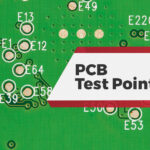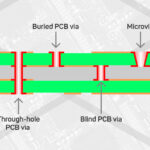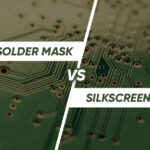Top 7 Must-Know Rules to Consider for Aerospace PCB Design!

When it comes to manufacturing printed circuit boards for aerospace electronics, they need to have an extremely high degree of reliability. More so, as these need to operate in harsh environmental conditions! Since such mission-critical operations do not allow for any scope for error and need to stick to strict operating standards, there are some stringent guidelines that need to be followed.
Rules to consider when it comes to aerospace PCB design:
1. High Quality Components
Now this clearly makes sense. Since you do not have any scope for malfunction and maintenance interventions aren’t a possibility, it is imperative to use high quality materials and components.
For instance, one of the materials that is recommended to be used includes anodized aluminum as it helps in heat dissipation. In fact, its thermal conductivity is far higher than that of traditional materials.
2. Thermal Management
With aerospace PCB design What is required is effective thermal management. Therefore, you need to ensure proper heat dissipation without using external heat sinks. This can be done in several ways, including:
- Use of heavy copper technology that allows heat dissipation without needing any additional cooling systems.
- Use of thermal vias.
- Use of materials such as Pyralux AP, FR 408 and other such materials.
- Ensuring there is a reasonable distance between components to allow for heat dissipation.
3. Strict adherence to reference standards
There are fixed aerospace PCB design standards to be followed when it comes to PCBs for the aerospace industry. These include:
- IPC 6012DS that lays down the performance standard for rigid PCBs for aerospace as well as military applications
- AS/EN 9100, which is a series of standards developed by IAQG specifically for the aerospace industry.
4. Use of Conformal Coating in Aerospace PCB Design
Given the harsh operating conditions for aerospace PCBs, conformal coating is a step that cannot be avoided. Some of the conformal coatings include:
- Electrolytic Nickel Gold
- ENIG
- HASL
- Lead-free HASL
Such conformal coatings offer protection against heat, humidity and more. Once the conformal coating has been applied, the use of an acrylic based spray is prudent, as it protects the PCB from contamination as well as short circuits.
5. Routing Guidelines
It is important to choose the size of PCB traces so that they can handle the current load as also to ensure effective heat dissipation. It is recommended that the angles on the traces are less than 45°, so that the signal transmission is uniform. Additionally, it is important to separate components that operate at low frequencies from the ones that operate at high frequencies. This will ensure that the signal quality isn’t compromised. Also, the clock signals need to have proper physical shielding. It is also important to follow the rules to reduce crosstalk.
6. Use of flex and rigid-flex PCBs
The use of flex and rigid-flex circuit boards is widespread when it comes to the satellite, aviation and aerospace industries. However, as compared to industrial applications they are made of polyamide as opposed to FR-4. The advantages that it offers include:
- It can adapt to small spaces.
- It is light.
- It is heat resistant.
- It has high durability.
In fact, flex and rigid-flex PCBs offer high resistance to vibrations and shocks besides offering great mechanical and electrical connections. In addition, they work well in limited space applications. With their use, secure connections can be managed offering polarity and contact stability.
7. Aerospace PCB Design Testing
Above everything, what is required is robust testing. In fact, you need to go through a whole lot of testing loops to ensure that the design is reliable and will work well in the aerospace environment, which means working in zero-gravity in a vacuum as also working in extremes of temperature, depending on whether they are working on a low-orbit or geostationary satellite.
To sum up
With aerospace PCB design and manufacturing, the aim must be to offer high reliability even in the most difficult operating conditions. To this end, right from design to selection of right materials can all ensure that the PCB offers a failure-free operation. A robust board will ensure that it can resist g-force vibrations, thermal issues and more.
Mer-Mar Electronics is one of the leading aerospace PCB design and manufacturing companies that specialize in building ITAR compliance aerospace PCB assembly. We are committed to accurately reflecting your design specifications as well as meeting the aerospace industry standards. We at Mermar Electronics, assist our customers from initial design to mass production & delivery; as one of the leading Aerospace electronics manufacturing services (EMS) providers.








